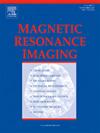纯稳态CEST。
IF 2
4区 医学
Q2 RADIOLOGY, NUCLEAR MEDICINE & MEDICAL IMAGING
引用次数: 0
摘要
基于CEST饱和和数据采集过程中纵向磁化发展的潜在物理模型,提出了一种新的稳态CEST序列设计,并在硅、体外和体内进行了验证。与现代序列和稳态CEST序列相比,该设计确保了在纯CEST稳态下的一致数据采集,从而在体外和体内获得高MTRasym分数和图像质量。目的:本研究的目的是利用纯CEST稳态对CEST序列进行增强,以提供更高的CEST效果和更好的灵敏度。方法:设计了一种新的CEST饱和/读出方案,在数值模拟中进行了测试,并随后在体外和体内进行了验证。结果:新型多二维螺旋纯稳态CEST序列具有良好的灵敏度和有效性。结论:将图像采集限制在纯CEST稳态下,首次在体外和体内实验中取得了良好的效果。本文章由计算机程序翻译,如有差异,请以英文原文为准。
Pure steady-state CEST
Summary:
A novel steady-state CEST sequence design, based on the underlying physical model of longitudinal magnetization development during CEST saturation and data acquisition is presented and validated in-silico, in vitro and in vivo. This design ensures consistent data acquisition in the pure CEST steady-state, leading to high MTRasym scores and image quality, both in vitro and in vivo, when compared to contemporary sequential and steady-state CEST sequences.
Purpose:
The aim of this study was to enhance CEST sequences by utilizing the pure CEST steady-state in order to deliver higher CEST effects and better sensitivity.
Methods:
A novel CEST saturation/readout scheme was designed, tested in numerical simulations and subsequently validated in vitro and in vivo.
Results:
The novel Multi-2D Spiral pure steady-state CEST sequence showed to deliver advantageous sensitivity and efficacy.
Conclusion:
Constraining image acquisition to the pure CEST steady-state showed promising results in first in vitro and in vivo experiments.
求助全文
通过发布文献求助,成功后即可免费获取论文全文。
去求助
来源期刊

Magnetic resonance imaging
医学-核医学
CiteScore
4.70
自引率
4.00%
发文量
194
审稿时长
83 days
期刊介绍:
Magnetic Resonance Imaging (MRI) is the first international multidisciplinary journal encompassing physical, life, and clinical science investigations as they relate to the development and use of magnetic resonance imaging. MRI is dedicated to both basic research, technological innovation and applications, providing a single forum for communication among radiologists, physicists, chemists, biochemists, biologists, engineers, internists, pathologists, physiologists, computer scientists, and mathematicians.
 求助内容:
求助内容: 应助结果提醒方式:
应助结果提醒方式:


